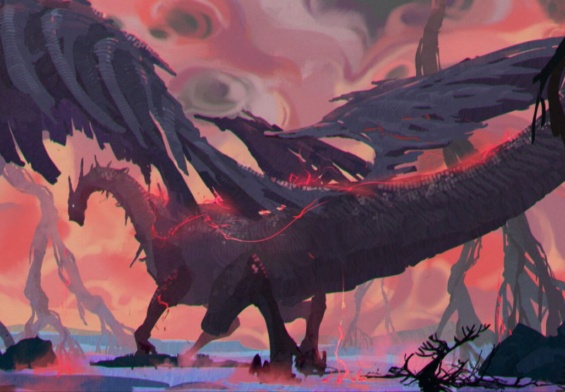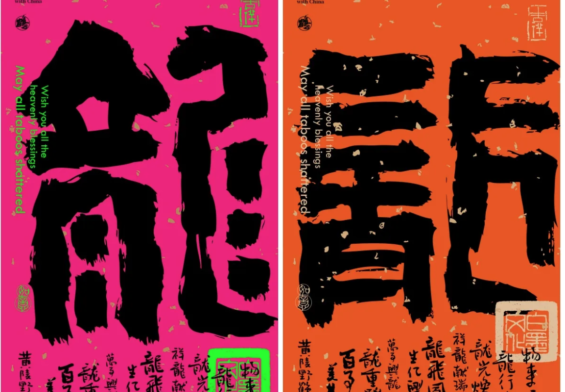By ArtiZen Editorial Team
Introduction
Fred Qiao is a rigging lead artist in the entertainment industry for three reasons: Firstly, he has a perfectly blended academic background in both math and technical art, which enables him to solve complex problems in the overlapping area between modeling and coding; Secondly, inspired by his mentor and role model Spensor at College, he developed a real passion for CG rigging, pursuing the CG path out of aesthetic satisfaction instead of pure job-seeking after graduation. Lastly, Fred is a very friendly and humble young lad, working hard, loving to solve problems, and never hesitating to extend a helpful hand to others. ArtiZen editor believes Fred is not only an instrumental talent to the team he currently works with but also will be even more valuable to any future projects he participates in.
Fred Qiao Portfolio: https://fredqiao.com
1. What’s CG art and what role is a CG artist playing in game and movie production?
CG rigging is an important step in visual effects (VFX) and animation. It’s what makes digital characters and objects move realistically. Imagine setting up strings on a puppet so it can move – that’s basically what rigging does for digital models.
In CG rigging, we create a digital skeleton and controllers for a model. This skeleton, made up of bones and joints, deforms the model, making the model movable. The controllers drive the joints, providing animators with an UI to move the model in lifelike ways. For instance, when we rig a digital character, we’re setting up its skeleton so its limbs can move naturally.
Rigging is essential because it brings characters to life. Without it, digital models would just be static and lifeless. Thanks to rigging, characters can run, jump, show emotions, and do all sorts of actions.
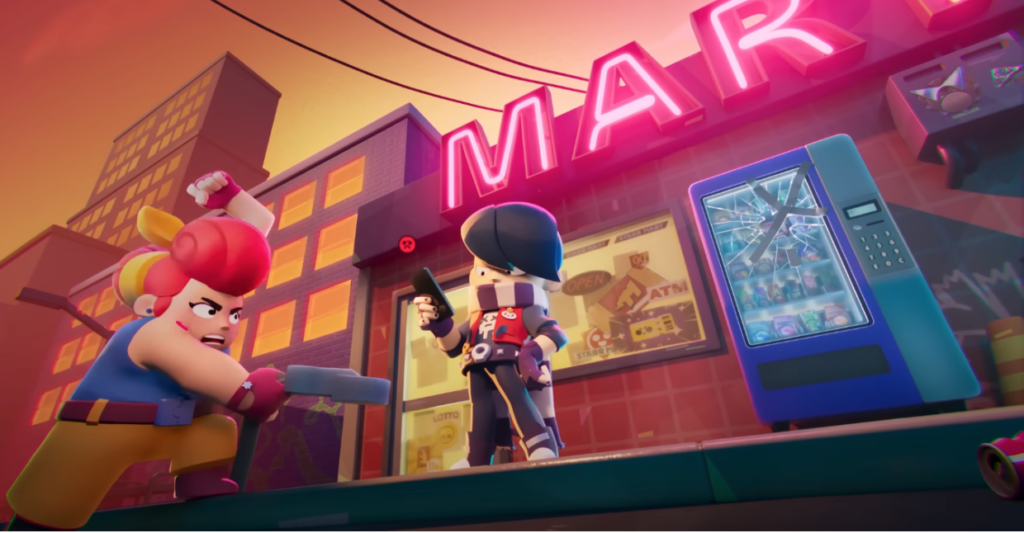
2. What prompted your interest in practicing CG art/technical art? Tell us about your experience breaking into the CG industry and your learning and academic journey.
I have been a big fan of movies since my childhood. When I was a kid, my mom took me to movies every Tuesday, when tickets were half-price. I have always been fascinated by the storytelling and stunning images on the big screen. However, being in the film industry was too far from me and remained a dream. In college, I was a math major, CMU had a program called “BSA”, which provided students who were both interested in art and science opportunities to study both and combine their knowledge to do amazing stuff. I did a 3D animation and special effects minor in that program, and have fallen in love with 3D animation. Under that program, I did some personal animation projects, some team projects, and met people who shared the same passion as me. Also, I met my mentor who taught me so much about 3D and rigging and supported me when I was full of doubts about myself. I really found my true passion there. After finishing my math degree, I studied animation for my master’s degree and got into the industry in Hollywood afterward. My technical background (coding, math) in college combining my art background helped me a long way.
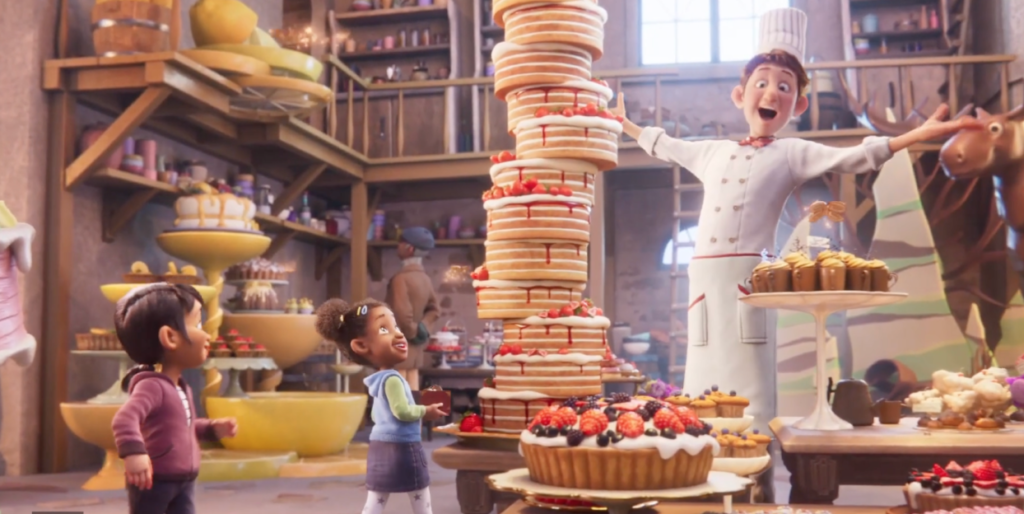
3. What’s your job description at your current company, what is your team focusing on doing? What business is your company doing and how do you feel your company business is different from others in the industry? What’s the difference between CG for games and for movies?
I lead the rigging team at the studio. On a daily basis, my team builds rigs for various creatures, including bipeds, quadrupeds, and insects, as well as for all kinds of mechs like cars, robots, and drones. I’m also in charge of setting up the rigging pipelines at the studio.
Additionally, my team helps troubleshoot issues in Maya for the animation team. If animators have problems with their scenes or tasks that are tricky to do manually, we assist them or write scripts to make their work easier. We act as the bridge between the CG team and the animation team.
My company handles post-visual effects for movies, TV series, music videos, and advertisements. Being an artist-driven studio, we focus heavily on the appeal and quality of the images we create. We care deeply about the art and strive to produce the most convincing and appealing visuals in the most efficient way possible.
There are many differences between CG for games and movies. For games, the focus is on creating the best quality art within the given resources. Artists need to be mindful of limitations, such as the types of deformers and the number of joints allowed in rigging. Since games are interactive applications delivered to players, the top priority is ensuring that the engineered product works and performs as expected.
In contrast, CG for movies is purely visual, with the final product being the images delivered to the audience. The top priority is to ensure that the visuals are appealing and have the desired emotional impact. For movies, CG artists strive to make the images look as good as possible, with fewer limitations compared to games.
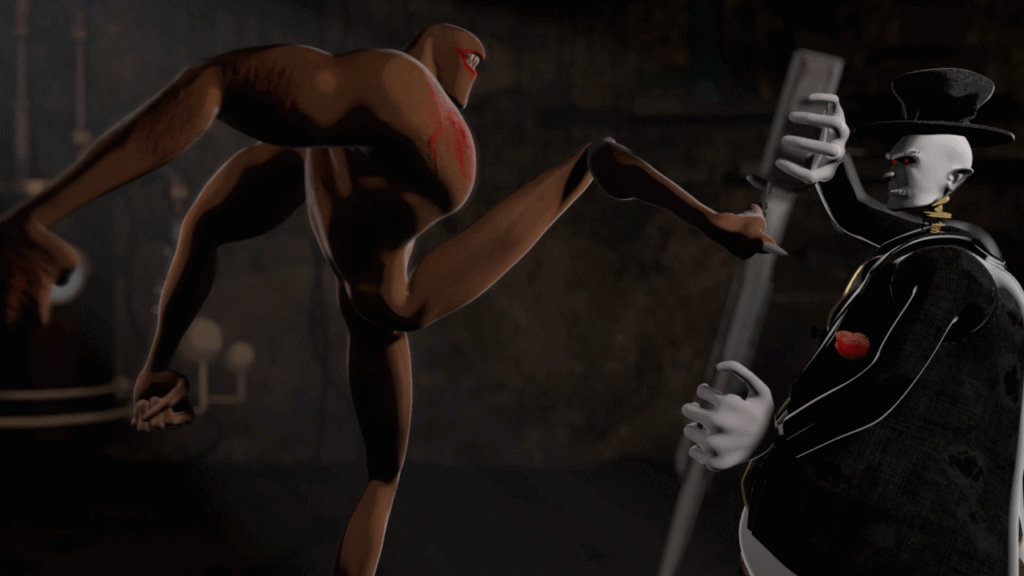
4. What’s your strength in CG production? What’s the most difficult part of rigging and creating special effects?
My strength in CG production comes from my diverse skill set that covers both the technical and artistic sides of things. I can create detailed rigs for creatures with believable and appealing deformation, and I can also do coding and develop complex tools, like our auto rigger and a high-fidelity facial rig setup. My skills on the both art and technical sides really allow me to build good-quality rigs with high efficiency.
Another important aspect of CG production is problem-solving. This industry moves at a fast pace, and we often need to fix issues like geometry exploding in no time. My ability to solve problems under pressure, which I honed during my computer science classes in college, is crucial to my daily work.
As for the hardest part, to me, it’s still balancing technical precision with artistic flair. Rigging, especially for complex characters and creatures, requires meticulous attention to detail to ensure movements look realistic and appealing. This involves understanding the character’s anatomy and mechanics and how the rig will be used in animations.
5. What’s the general process of animation production, how do you work with other artists such as 2D/3D artists, character designers, storyboard artists, and cinematic directors? etc?
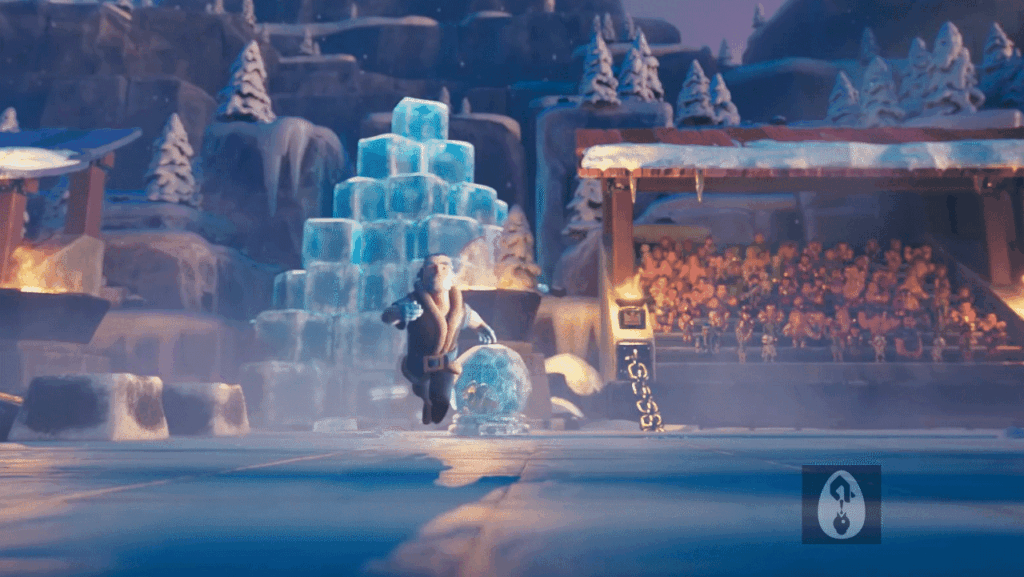
The animation production process includes:
- Pre-production:
- Concept Development: Brainstorm ideas and develop the project’s concept.
- Scriptwriting: Write the detailed story.
- Storyboarding: Create visual outlines of key scenes.
- Character Design: Design characters based on the storyboard.
- Production:
- Modeling: Create 3D models of characters, props, and environments.
- Rigging: Build skeletons and controls for models to enable movement.
- Animation: Animate characters and objects using the rigs.
- Effects (FX): Add elements like cloth, fur, muscle simulations, and environmental effects.
- Post-production:
- Lighting and Rendering: Set up lighting and render final images.
- Compositing: Combine all elements into the final frame.
- Editing: Put the final frames together to complete the animation.
At the beginning of the project, I will meet with the production team to learn about the storyboard and animation, deciding what features are needed for the rigs.
Then I will make a plan to be able to build the rigs in the most time-efficient way while making sure they are looking great on the screen and meeting the animation needs. For example, if we are making 10 similar rigs, I will write a script that can automate the rigging process to save time.
In the rigging process, I will check the models and communicate with the modeling team to make sure the modes meet the rigging standards so that they can deform appealingly. At the same time, I will communicate with the animation team and ask for their preferences on the rigs. To us riggers, animators are our clients and we need to make the rigs meet their needs.
After delivering the rigs, we will usually follow up to troubleshoot animators’ troubles in their Maya scenes, making sure geos are caching correctly and the lighting team can get the correct animated geometry.
6. We see you have a long list of TV, films, and commercial projects, what part of work did you get involved in and how did you contribute to these projects?
I’m involved in supervising rigging, some of the CFX work, and general troubleshooting. I’ll use my most recent project as an example. In this project, I built the hero rig and was responsible for leading the rigging work for the entire project.
First, I communicated with the production team to understand the scenes in which the rig would appear and the type of animations required. Then, I drafted an initial rig design and discussed it with the animators to see if any features needed to be added or changed.
Once I comprehensively understood the project and the animations, I developed the rigging plan. In this project, some scenes required the same character to appear with different facial proportions. Creating a separate rig for each variation would be very time-consuming, especially since we already had multiple characters. Therefore, I developed a facial deformation system that could be applied to different characters to change their facial proportions. Given the number of characters, I designed a workflow and wrote a Python script to automate the creation of this facial deformation system, ensuring we could complete the rigging work as efficiently as possible.
After receiving the 3D models, I checked them for topology and edge flow issues that might affect rigging and communicated with the modelers to make the necessary adjustments. Once the models were good to go, I assigned the rigging tasks to specific riggers based on the complexity of the rig and the availability of team members. In the actual production process, I handled difficult rigging issues and checked the quality of each rig to ensure high standards. I also followed up with the animators, making updates to the rig based on their feedback. Additionally, I helped solve any problems they encountered and wrote Maya tools to assist them in their work.
In this project, I also handled some character effects work. For example, I refined the hand movements during a character’s entrance scene, sculpting the frames to add detailed bone movements, making the performance look more terrifying.
7. Which is your favorite project so far and why?

My favorite project is one of the Brawl Stars commercials I worked on at Psyop. This project featured very exaggerated and creative animation, incorporating a strong 2D style into 3D animation. I’ll use motion blur as an example of the 2D style. Typically, in 3D animation and film, when objects or characters move very quickly, we render motion blur to simulate the effect of a camera capturing fast motion. However, in 2D animation, this blur effect is often depicted by elongating the object to show its speed.
In the Brawl Stars commercial, even though it was 3D animation, we used an exaggerated 2D technique of stretching the characters instead of rendering motion blur. This gave the final result a very comic book-like style. And the production process was quite fun as well. We added a lattice deformer (a tool to freely change an object’s shape) to each character and object that needed to move quickly and provided easy-to-use controllers for the animators to stretch and squash the characters dramatically.
Additionally, during the post-production character effects stage, our rigging lead’s wife, a talented storyboard artist, did draw-overs on the animation, creating stylized and clean 2D silhouettes. We then sculpted the 3D animation frame by frame to match these 2D-style outlines. The final animation was extremely exaggerated and cartoonish, with a strong 2D aesthetic and impressive expressiveness. I personally loved the animation itself and thoroughly enjoyed the production process.
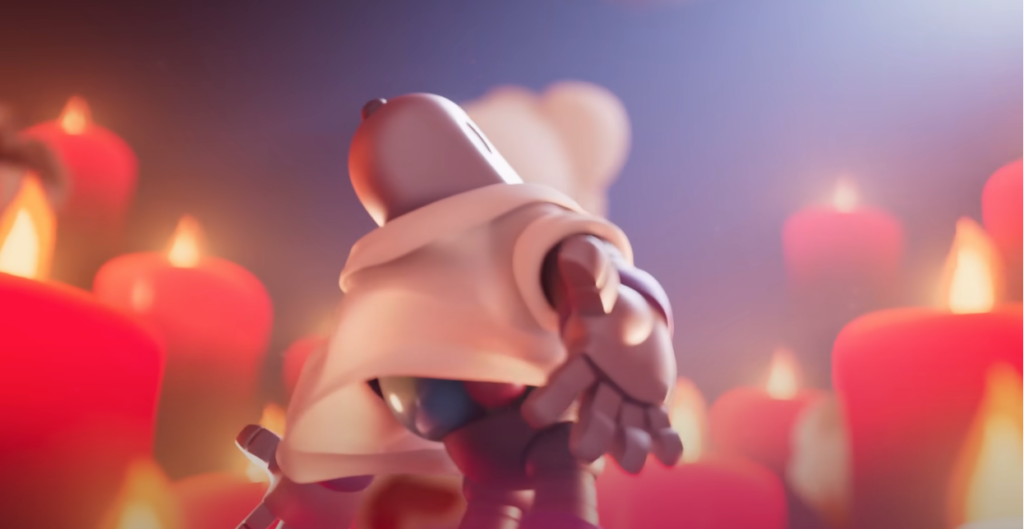
8. Which CG artist do you admire most from the industry?
The person I admire the most is Spencer Diaz, my rigging and animation teacher at CMU and my mentor. He is currently the lead rigger at Skydance. Spencer’s rigging skills are exceptional, and he has an artistic background. In addition, he is very good at scripting and the technical side as well. He is proficient in all aspects of Maya, from modeling to rendering. During my time in college, whenever my classmates and I faced any problems in our personal or group projects, he could always solve them, and he did so with humility.
Spencer helped me a lot during my university years. I was majoring in mathematics at the time, but I didn’t enjoy it and felt very uncertain about my future. He guided me towards animation and introduced me to rigging, showing me how my knowledge of mathematics and computer science could be valuable in this field. He gave me the confidence to pursue animation and complete my degree in mathematics. He inspired me to help others who might feel lost in the animation industry, to share my knowledge generously, and to pass on my passion for CG.
9. What’s your advice for design students who are interested in developing skills in CG art?
I think it’s essential to maintain a passion for this industry. It can be really tough, with high pressure and intense competition. If you don’t genuinely love CG and art itself, it can be hard to stick with it. The love for this industry is also the greatest reward for us as CG artists.
When I talk to friends in other fields about their work, most of them see it as just a job, a way to make money. But my peers in CG, including myself, genuinely love the beautiful visuals we create and feel a great sense of accomplishment from the final stunning images. Of course, earning money and receiving proper compensation is very important, but in this industry, what truly keeps us going is our passion for CG.
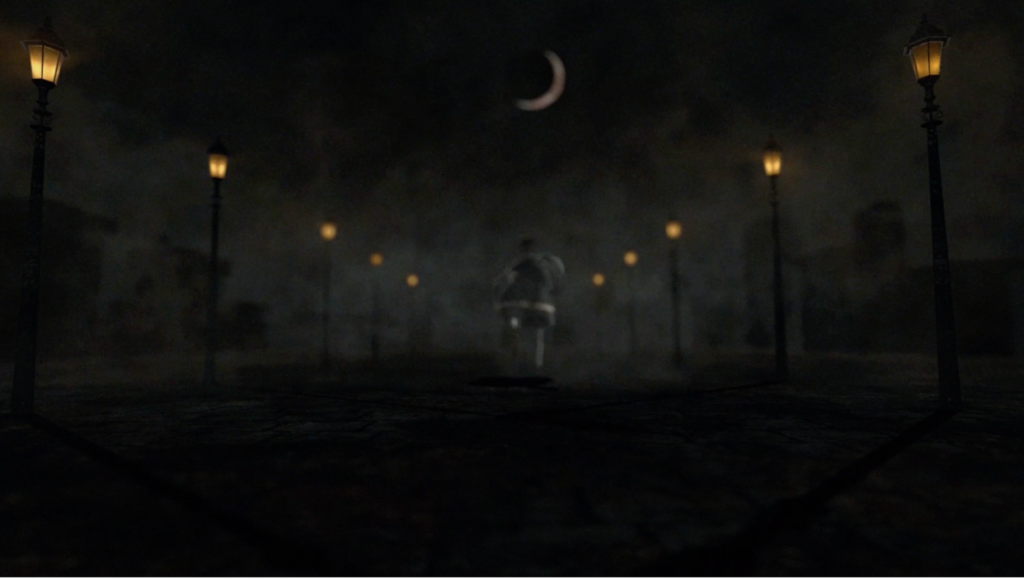
10. How to build a portfolio that qualifies for a full-time job?
The first point is to put your best work at the very beginning. Recruiters often don’t watch the entire portfolio from start to finish during the initial screening, so making sure they see your best work first is crucial for leaving a strong impression.
Secondly, it’s important to get feedback from experienced professionals in the industry. When I reviewed students’ portfolios, I noticed that they often don’t know which part of their demo reel is the most impressive. Sometimes students think that the most difficult and time-consuming pieces are their best, but these might not meet industry standards. Regularly getting your portfolio reviewed by industry veterans can help ensure that it aligns with job market expectations.
Fred’s Resume: https://www.linkedin.com/in/fred-qiao
This is an original interview conducted by ArtiZen with the artist. If you are a media and interested in reposting this article, please get in touch with our editorial team for reposting policy. [email protected]



